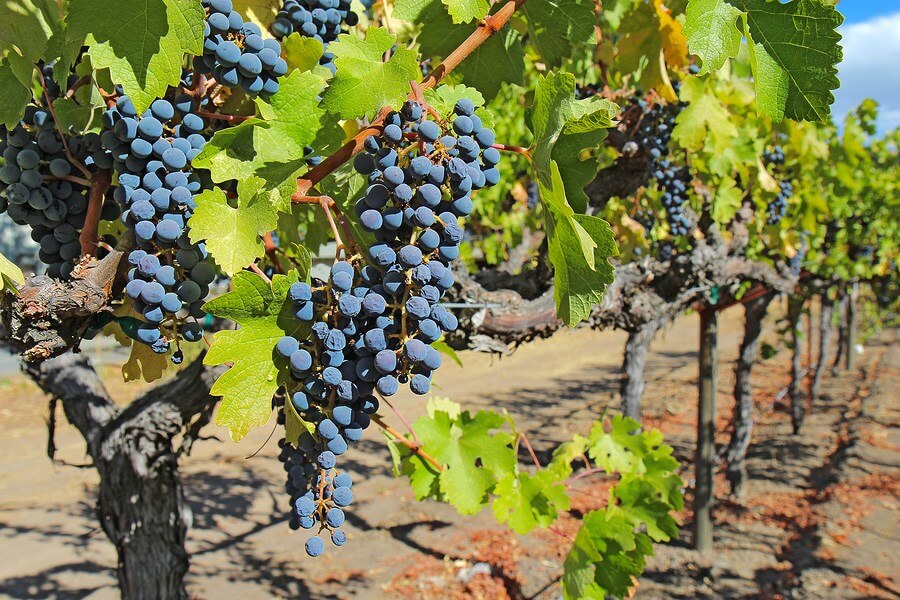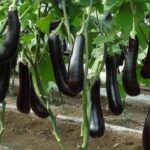Grapes are among the most popular fruits globally, known for their sweet, juicy taste and high nutritional content. While traditionally associated with countries like France, Italy, and the United States, Kenya’s agricultural potential is increasingly attracting attention for grape farming. In recent years, viticulture has become a viable agricultural business in Kenya, thanks to the country’s favorable growing conditions in select regions, coupled with a growing market for fresh and processed grape products. Grapes, which can be consumed fresh, dried into raisins, or processed into wine, juice, and other products, offer immense business opportunities for farmers in Kenya.
This article explores the growing industry of grape farming in Kenya, examining the varieties of grapes grown, the ecological conditions needed for successful cultivation, the best planting techniques, and the market opportunities available for Kenyan grape farmers.
Why Grapes Farming Is Gaining Popularity in Kenya
In Kenya, the demand for grapes is rising, driven by the expanding middle class, growing consumption of healthy snacks, and increasing interest in wine culture. While the country still imports a large portion of the grapes consumed locally, the need for locally produced grapes is rising steadily. The development of Kenya’s wine industry, coupled with the demand for fresh fruit and processed grape products, offers a unique opportunity for farmers.
Several regions in Kenya have been identified as ideal for grape farming due to their temperate climates, including Naivasha, Meru, Bungoma, and parts of Nakuru. These areas offer the right mix of rainfall, altitude, and temperatures for successful grape cultivation. The growth of the local wine industry, alongside the rising interest in grape-based products, provides a clear market for grapes cultivated in Kenya.
Popular Grape Varieties Grown in Kenya
In Kenya, the types of grapes grown vary, with both international and local varieties thriving in the right climate. These varieties are selected based on their market appeal, adaptability to local conditions, and potential for producing high-quality fruit.
1. French Grape Varieties (Vitis vinifera)
Among the most popular grape varieties in Kenya is the Vitis vinifera family, commonly known as French grapes. These varieties are prized for their ability to produce excellent table grapes and wine. Some of the common Vitis vinifera types grown in Kenya include Chardonnay, Sauvignon Blanc, Cabernet Sauvignon, and Merlot. These grapes perform well in areas with moderate temperatures and sufficient sunlight, such as in the highland regions of Meru and Naivasha.
2. American Grape Varieties
American grapes, such as Thompson Seedless and Concord, are also cultivated in Kenya. These varieties are particularly appealing for fresh fruit production, and they are less vulnerable to pests and diseases than the French varieties. American grapes are more adaptable to varying soil types and climatic conditions, making them suitable for larger-scale commercial farming.
3. Mediterranean Grape Varieties
Mediterranean grapes are well-suited for Kenya’s warm temperatures. Varieties such as Zinfandel and Sultana thrive in regions with hot climates, and they are often grown for both fresh consumption and dried fruit production. The hot, dry conditions of places like Naivasha and Bungoma are ideal for Mediterranean varieties.
Ideal Growing Conditions for Grapes in Kenya
Grapes are relatively adaptable to different growing environments, but certain ecological factors must be met to ensure healthy vines and a successful harvest.
1. Soil Quality
While grapes can be grown in various soil types, they flourish best in well-drained, loamy soils. Grapes do not tolerate waterlogged soil, which can damage the roots and stunt growth. Soils should be rich in organic matter, with a pH between 5.0 and 7.0 for optimal nutrient absorption. Regular soil testing is recommended to maintain soil health and adjust nutrient levels.
2. Climate and Temperature
Kenya’s diverse climate offers regions that are perfect for grape farming. Grapes grow best in regions with moderate to hot temperatures, ranging from 20°C to 30°C. Areas with long, warm summers are ideal, as grapes require at least 1,500 hours of sunlight to mature. The higher altitudes in regions such as Meru and Naivasha provide the perfect conditions, where grapes can grow without the risk of frost.
3. Water Requirements
Grapes require consistent moisture for healthy growth, especially during flowering and fruit-setting periods. However, they cannot thrive in waterlogged conditions. Drip irrigation is the preferred method of watering grape vines, as it delivers water directly to the roots without wasting it. In areas where rainfall is unpredictable or insufficient, reliable irrigation is essential to ensure a healthy crop.
4. Air Circulation
Good air circulation is crucial to grape farming, as it helps to prevent fungal infections such as powdery mildew. Proper vineyard management, including adequate spacing between vines, ensures that air can flow freely around the plants, reducing the risk of disease and improving overall vine health.
Planting and Propagation Techniques
Grapes are commonly propagated using cuttings, although grafting and seeds can also be used in specific cases. Propagating from cuttings is the most common method in Kenya, as it ensures that the resulting vines are true to the desired variety.
1. Propagating Grapes from Cuttings
To propagate grapes from cuttings, healthy, disease-free vine stems about 6 to 8 inches long should be selected. These cuttings are typically soaked in water for 2 hours to promote root development. The cuttings are then planted in well-drained soil and spaced adequately to allow for growth.
2. Optimal Spacing for Grapes
Grape vines need plenty of space to grow and spread out. The recommended spacing between vines is 6 to 10 feet apart to allow for proper airflow and sunlight penetration. The planting holes should be approximately 12 inches deep and wide to accommodate the root systems.
3. Providing Support for Vines
Since grapevines are climbing plants, they require a strong support system to grow effectively. Farmers often use trellises or fences to train the vines to grow vertically. This not only supports the vines but also helps maintain healthy airflow around the plants, reducing the risk of disease.
4. Fertilization and Care
Grapes do not require heavy fertilization in the first year of planting unless the soil is particularly poor in nutrients. Once the vines are established, organic fertilizers like compost or manure can be applied to support growth. Grapes are self-fertile, meaning they do not require external pollination to produce fruit.
Harvesting Grapes in Kenya
Grapes typically begin to produce fruit within one year of planting, but full yields are usually achieved after 3 to 4 years. The harvesting period depends on the grape variety and local climate conditions, but most grape varieties are ready for harvest twice a year.
1. When to Harvest Grapes
Grapes are usually ready for harvest when they are fully ripe, which can be determined by their color, taste, and ease of crushing. Ripe grapes are generally plump, have a rich color, and a sweet taste. Harvesting is typically done in the early morning or late evening to avoid the heat of the day and prevent damage to the fruit.
2. Expected Yield per Vine
Under optimal growing conditions, each grape vine can yield up to 15 kg of grapes per season. Farmers can expect increased yields as the vines mature and become more established.
The Grapes Market in Kenya
Kenya’s grape market is steadily growing, with fresh grapes becoming a common sight in supermarkets and local markets. Grapes are sold for between KES 300 and KES 400 per kilogram in most supermarkets, but prices can vary based on the quality, variety, and season. The market is also expanding due to the growth of the local wine industry.
Local and International Market Opportunities
Kenya’s wine industry is still developing, but it offers a growing market for locally grown grapes. Local wineries, including Kenya Wine Agencies Ltd., are actively seeking high-quality, locally grown grapes for wine production. Additionally, fresh grapes and processed grape products such as grape juice and raisins offer export opportunities, particularly within the East African region.
Grape farmers can also take advantage of direct-to-consumer sales through online platforms and farmer’s markets. Establishing connections with local wineries, juice manufacturers, and even international buyers can significantly boost sales and profitability.
Challenges of Grape Farming in Kenya
While grape farming offers great potential, it is not without its challenges. These include:
- Pest and disease management: Grapes are prone to a variety of pests and diseases, including birds, mildew, and fungus.
- Initial investment: Grape farming requires significant upfront investment in land, seedlings, irrigation systems, and trellising.
- Climate unpredictability: Weather patterns can affect grape production, particularly in areas prone to drought or heavy rainfall.
Grapes farming in Kenya is an emerging agribusiness with enormous potential. With the right knowledge of climate, soil, and vine care, farmers can tap into the growing demand for fresh grapes and processed grape products. The market for locally grown grapes, especially in the wine and juice sectors, presents a unique opportunity for Kenyan farmers to diversify their businesses and enjoy profitable returns.
With proper vineyard management, effective marketing, and investment in quality infrastructure, grape farming can become a key part of Kenya’s agricultural future, contributing to both local and international markets.





